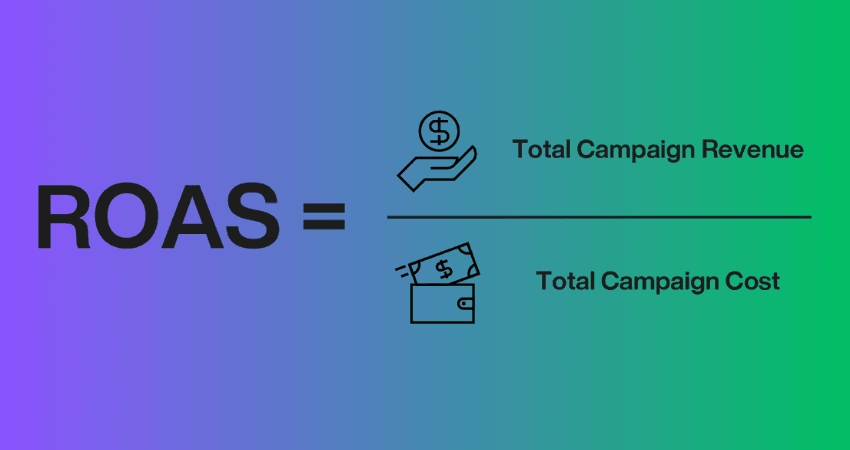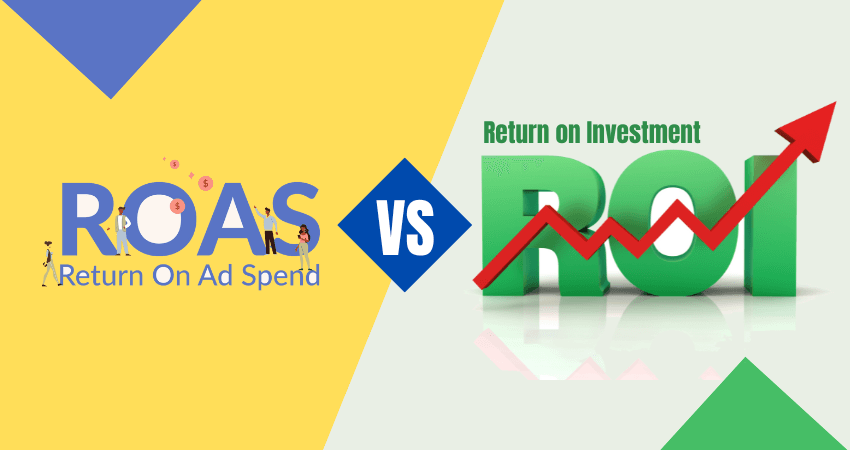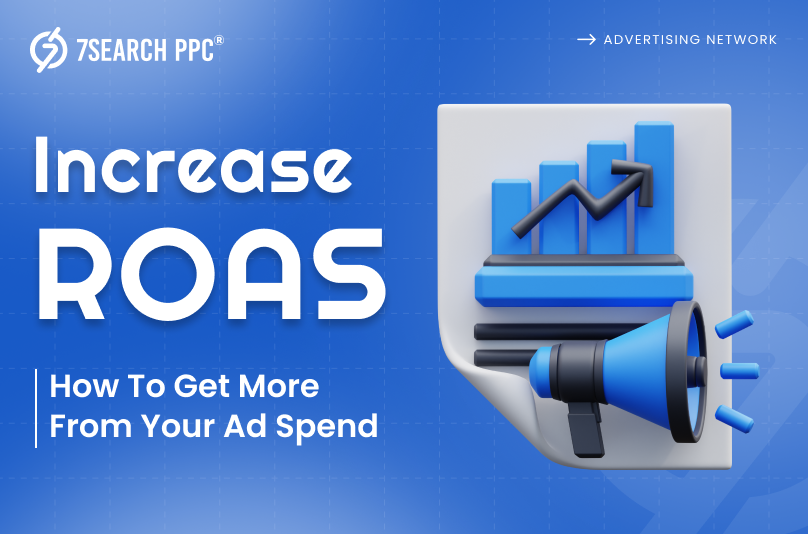The projected annual value of ad spend is expected to continue growing, exceeding 1.17 trillion dollars by 2028. According to Statista, the United States leads the world in ad spending, projected to hit $422.3 billion in 2024. China follows with an estimated $231 billion, while the United Kingdom and Japan take the third and fourth spots, with spending expected to reach $58 billion and $56, respectively. This high ad spending reflects how brands are putting money into advertising with the aim of earning it back. If you are also looking for the same, you need to find ways to increase ROAS.
Imagine spending thousands of dollars on advertising campaigns only to get minimal returns on your investment. That’s so unfair. Many businesses encounter this frustrating situation.
The fact is you can’t show your dependency only on organic traffic, as it takes a lot of time. We believe that businesses can’t afford to spend more time on attracting traffic. Do you? Of course not; that’s why businesses look toward paid ads.
But what if there is a way to maximize your return on ad spend and get more out of every dollar spent? In this blog, we’ll look at effective strategies to help you increase your ROAS and achieve your marketing goals. We’ll cover various topics, ensuring that by the end, you’ll have a clear roadmap to boost your ROAS and gain more sales and conversions for your business.
Increase ROAS: The Only Way To Protect Ad Investments
Every business runs on investments; some investments are bigger, and some are smaller. One part of the investment goes into running online ad campaigns for various motives, such as increasing website traffic and promoting specific products or services.
The return on these investments is measured by a metric called ROAS, or Return on Ad Spend. If a business’s ROAS is lower than the investment made in ads, it indicates a loss. That’s why they often make an effort to increase ROAS by applying various strategies.
Online advertising writes a success story for many businesses daily. However, some businesses still fail to take advantage of this effective and cost-friendly advertising approach due to a few common mistakes.
Sometimes, they create their ad campaign and forget to assess the returns. As a result, this oversight can lead to significant financial losses as businesses continue to invest in campaigns that aren’t delivering the desired results.
ROAS protects advertisers by projecting an exact figure that indicates whether their investment in an ad is profitable or not.
Is Your Ad Campaign Worth It? Learn to Calculate ROAS
ROAS stands for Return on Advertising Spend. It’s a metric that helps businesses see if their advertising efforts are bringing in enough revenue to justify the costs. Simply put, ROAS shows how much money you earn for every dollar you invest in ads.
Here is the formula:
ROAS = Total Campaign Revenue / Total Campaign Cost

•Revenue from ads: This is the money you earn from sales directly from your ads.
•Cost of ads: This includes the cost you spent on your ad.
Example:
Let’s say you created an account on an ad network, spent $150 on an ad campaign, and made $450 in sales from that campaign.
ROAS = $450 / $150
ROAS = 3
ROAS helps you understand if your digital advertising is worth the money. A ROAS of 3, for example, shows that your ads are profitable since you are making more money than what you spent. You can also express ROAS as a percentage. In the above example, we calculated ROAS = 3. We need to multiply by 100 to change it into a percentage:
ROAS percentage = 3 x 100
ROAS percentage = 300%
This means you’re getting a 300% return on your advertising spend. We would like to clear up the confusion about conversion value. Conversion value is the amount you make directly from a specific ad campaign. It does not include revenue from other sources or sales channels. Essentially, it’s the revenue generated only by the actions resulting from that ad.
Again, let’s take an example. Suppose you run an ad and sell three products, each priced at $50. Your total revenue is $150. However, only one of these sales came from people who clicked on your ad, while the other two came from different sources.
In this case, your conversion value is $50 because that’s the amount you earned specifically from the ad. So, the conversion value shows how much money you’ve earned from the direct influence of your ad, not from other sales activities. Overall, this metric is very helpful if your goal is to increase ROAS.
What Constitutes a Good ROAS?
Are you looking to increase ROAS and now getting confused about finding a good ROAS for your niche? Well, what constitutes a good ROAS is a controversial topic, and there is no accurate answer.
Everyone has their own logic, so what’s considered a good ROAS can vary widely depending on your industry, goal, and specific circumstances. If your brand’s goal is to generate brand awareness, you might see a lower ROAS, as building brand recognition often doesn’t lead to immediate sales.
ROAS expectations also differ by industry. For example, businesses with high customer lifetime value (CLV) may be satisfied with a lower ROAS, while those with lower CLV might need a higher ROAS to justify their advertising spend.
This is because a higher ROAS can offset the fact that each customer generates less revenue over time. Some advertisers don’t rely on the ROAS metric. Let’s understand the reason behind their decision to avoid the ROAS metric with an example.
Example: If you invest $150 in ads and generate $900 in revenue, your ROAS would be 6. However, this figure alone doesn’t indicate profitability. If your other expense is $800 and you spent $150 on ads. It clearly shows that you are not making a profit even if your ROAS is 6.
What do you need to do? You need to increase ROAS while keeping the other factors in mind so that you can make profits.
ROAS vs. ROI: What Sets Them Apart
When discussing metrics that assess the return on your ad spend, ROAS (Return on Ad Spend) often comes to mind. However, ROI (Return on Investment) is also important, as it measures returns on investment.

Both metrics aim to assess returns, but they are used for different roles. How? Their purpose is similar—evaluating the return—but they differ in focus: ROAS specifically measures the effectiveness of your ad spend, whereas ROI evaluates the overall return on all investments. Still not getting it? Ok, that’s not a problem; let’s make things simpler.
ROAS specifically looks at how much revenue you earn from a particular ad campaign. It’s a short-term measure that tells you if your ads are generating income. For example, if you spend $100 on an ad and make $300 in sales from that ad. This means you are earning $3 per $1 invested in your ad.
ROI, however, considers the broader perspective. It measures the return on all your marketing investments, not just ads. This includes costs like paying influencers or on various advertising platforms, hiring an SEO agency, or running a blog. ROI helps you see if your overall digital advertising strategy is profitable.
In simple terms, ROAS is like checking the results of one part of your marketing, while ROI looks at everything together. Both are important to understand how well your efforts are paying off. Increase ROAS and ROI: both are important for advertisers.
5 Proven Techniques to Get the Most Out of Your Ad Spend
Improving PPC ROAS requires strategic planning and execution. Here are five proven techniques to help you get the most out of your ad spend:
Make Your Ads Attractive and Deliver Your Message Uniquely
Attractive and unique online ads receive more attention compared to regular ads. The audience appreciates these ads wherever they encounter them and tends to engage with them more. Creating unique ads doesn’t mean offending others or disparaging your competitors. It means using your creativity and talent to make your ads more notable.
There are many sources available for those who have no idea how to increase ROAS by creating attractive online ads. You can also use YouTube, Blogs, and Social Media for reference. Taking reference only means taking an idea that includes (Color Themes, Visuals, CTAs, and Written Content.)
Follow Your Rival’s Steps
Don’t ignore your rivals in your industry. They are crucial in guiding you to avoid mistakes. Follow competitors whose businesses are performing well due to their advertising strategies.
Pay attention to what they include in their ads that you might have missed. Also, observe which advertising platforms or ad networks they partner with. For example, if they are investing heavily in 7SearchPPC instead of Instagram, it might be worth shifting some of your budget to 7SearchPPC.
Successful rivals usually put a lot of thought into their ad strategies. By keeping an eye on them, you can gain insights into what works. Look at how top competitors reach their audience. You can use their ad formats to make your own ad more appealing.
Learning from what works for successful competitors can guide you to increase ROAS effectively.
Optimize Your Keywords and Bidding Strategy
It is crucial to optimize your keywords and bidding strategy to increase ROAS. Start by refining your keywords to ensure they match what your ideal audience is searching for. You can use tools like Ahrefs to find high-volume keywords and adjust your ad groups accordingly.
Regularly review and update your keywords to maintain relevance and improve your ad’s visibility. By targeting the right keywords, you’ll enhance your ad’s performance and get better results from your ad investment.
Show Your Faith in a Reliable Advertising Platform
The next tip to increase ROAS is choosing a reliable advertising platform. Unlike traditional ads, which are seen by everyone regardless of their relevance, digital platforms allow you to target specific demographics.
For instance, you can focus your ads on women or children in particular locations. This targeted approach ensures your budget is spent efficiently, reaching only those audiences who are most likely to convert.
By aligning your ads with the right audience and platform, you can achieve a high return on ad spend (ROAS) and get the most value from your investment.
Focus On Your Landing Page
To maximize your ad spend, make sure your landing page is effective. It’s like your online storefront—if it’s not appealing, visitors won’t convert. A good landing page should include:
- Engaging banners
- Customer-focused copy
- A compelling headline
- Concise content
- Relevant visuals
- A clear message that addresses the visitor’s problem and offers a solution.
A well-designed landing page can turn your ad clicks into actual sales. By doing this, you can easily take your first step to increase ROAS.
Conclusion
How to increase ROAS is the topic of most discussion among advertisers. It is crucial for businesses to protect their ad investments. By following the strategies outlined in this blog, you can create more effective ads, optimize your campaigns, and achieve your marketing goals.
Increasing ROAS is not just about spending money wisely; it’s about making every dollar count. By focusing on creating effective ads, analyzing competition strategies, optimizing keywords and bidding, and other tips that you have learned in this blog, you can significantly increase ROAS.
Frequently Asked Questions (FAQs)
What is ROAS?
Ans. ROAS stands for return on advertising spend. It is a metric that shows how much revenue you earn for every dollar spent on digital ads.
What constitutes a good ROAS?
Ans. A good ROAS varies by industry and goals. Generally, a ROAS higher than one means you’re making more money than you spent.
Why should I monitor my competitors to increase ROAS?
Ans. Observing your competitors can give you insights into successful ad strategies and the platforms they use. By learning from their methods, you can adjust your own ads and strategies to increase ROAS.
Why is choosing a reliable advertising platform important to increase ROAS?
Ans. A reliable advertising platform allows for precise targeting of your ads to the right audience, which helps increase ROAS and maximize the effectiveness of your ad budget.
How can I calculate ROAS?
Ans. To calculate ROAS, use this formula: ROAS = Revenue from ads / Cost of ads.


















